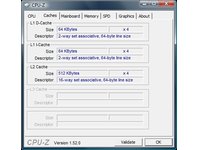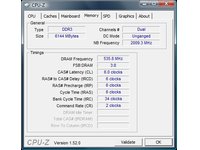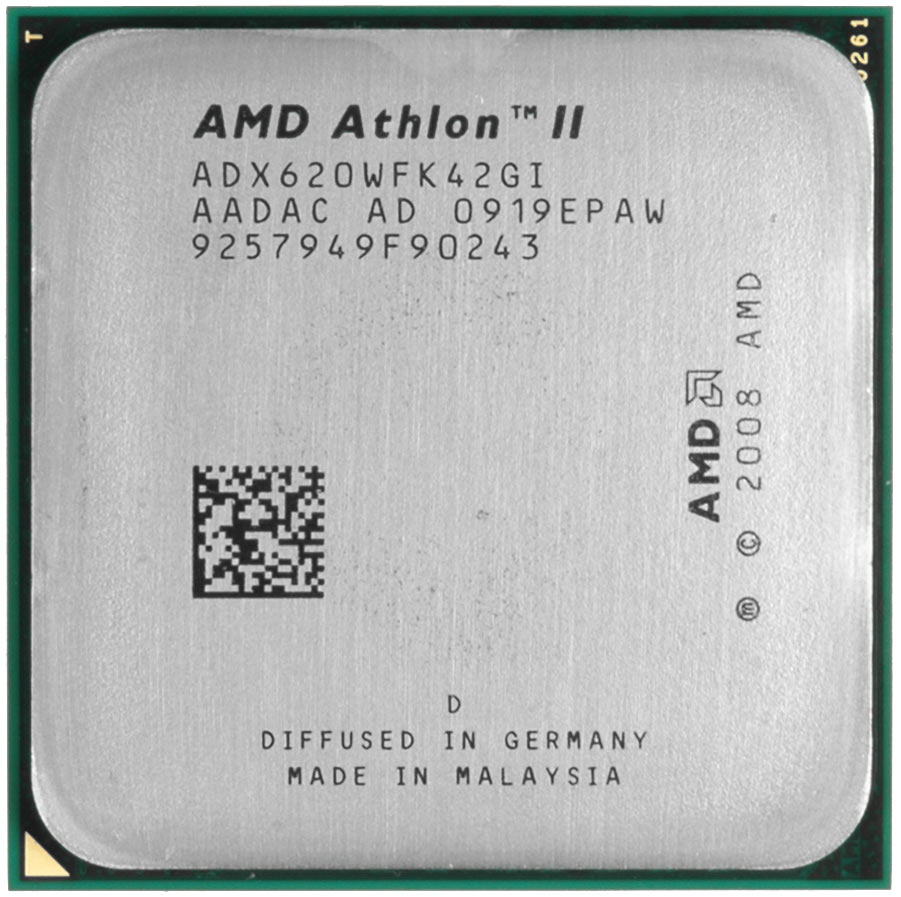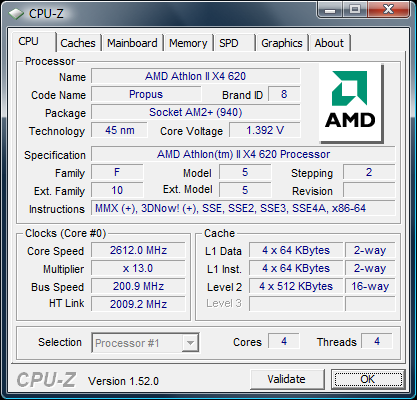AMD Athlon II X4 620: Quad Core For The Masses At $100
AMD's Athlon II X4 620
The Athlon II X4 is the first model in AMD’s L3 cache-less quad-core family, and we expect this processor to be very successful at the low-end. Not only does it represent the cheapest quad-core model available today at roughly $100, but it could very well become one of the most popular AMD upgrade processors ever. Since it is based on AMD’s 45nm manufacturing process, Propus is capable of running in a Socket AM3 motherboard with DDR3 memory, but you can also install it into any AM2+ motherboard once there is a BIOS update available. The new processor might even work properly without BIOS modifications on many boards (Ed.: and it indeed did in our older ASRock 790GX-based test platform).
The Athlon II X4 620 runs at a 2.6 GHz core clock rate with a 95W TDP. AMD will be offering the 2.8 GHz model Athlon II X4 630 by the time you read this. A faster model is on the roadmap for sometime in Q4 of this year, too. The same applies to the Athlon II X3 family, which launches at a 100 MHz higher clock speed than the X4s—hence the model numbers 425 (2.7 GHz) and 435 (2.9 GHz). Once again, a faster model is scheduled for Q4.
Our Propus sample behaves exactly like a Phenom II X4, offering four cores and running at the same nominal voltage levels. Different from the Athlon II X2, where AMD combines the L2 cache capacity of all four cores for use with only two cores, yielding 2 x 1024KB, the Athlon II X3 and X4 models have 512 KB L2 cache per core (like all Phenom IIs).
Unfortunately, our sample is still a C2 part, although AMD has started switching to the newer C3 stepping. We’ll look at the stepping differences as soon as we can get two otherwise-identical Cs and C3 models. Some time ago, we looked at four virtually identical Athlon 64 X2 5000+ processors that all only differed in their F2, F3, G1, and G2 steppings. Since there were interesting differences then, we’re curious to see whether or not AMD and GlobalFoundries could actually improve some characteristics of the Phenom II core now.


Get Tom's Hardware's best news and in-depth reviews, straight to your inbox.
Current page: AMD's Athlon II X4 620
Prev Page AMD’s Processor Lineup: A Yield Party Next Page All AMD 45nm Processor Models Compared
